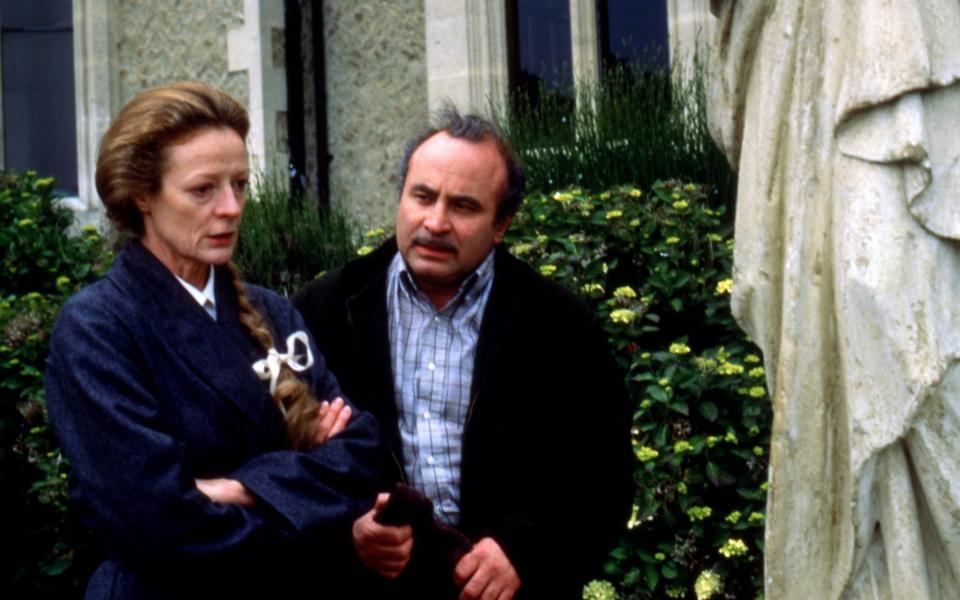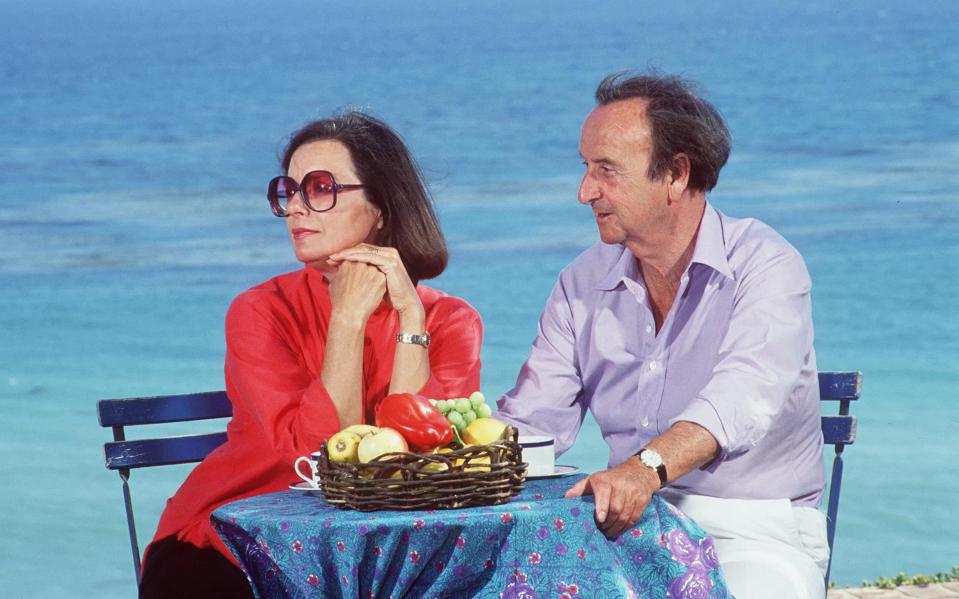Hitchcock, Conrad and literary exile: Colm Tóibín on his hero Brian Moore

In 1965, the Irish novelist Brian Moore found himself in Hollywood working with Alfred Hitchcock on the film Torn Curtain, for which he wrote the script. “I told Hitch one day that my father was a doctor, and that I knew death was often a long and painful business. People didn’t always die as quickly as they did in movies. As soon as I said that, Hitch...went mad thinking of all the ways we could prolong a murder scene.”
Brian Moore, himself, had considerable experience of dealing with death. In 1941, during German air raids over Belfast, when Moore was not yet 20, he worked as an ARP warden, volunteering to place the dead in coffins. Later, he would describe his wartime experiences in his novel ‘The Emperor of Ice-Cream’ (1965).
At the age of 22, Moore managed to find employment with the wartime department of the Civil Service. In an essay ‘The Writer as Exile’, he wrote of his first departure from Belfast: “I didn’t know that in a few weeks I would be in Algiers, that in six months I would see the Germans fleeing Naples…that I would land with the Americans in the South of France, that I would see collaborators shot dead in the streets of Marseilles…and watch the Russian armies roll back victorious through Poland on their way home.”
After the war, since Moore found the atmosphere in Belfast stultifying, he emigrated to Canada. At the age of 27, like the hero of his novel ‘The Luck of Ginger Coffey’ (1960), he found work on a Montreal newspaper as a proofreader. Between 1951 and 1957, he published seven thrillers under pseudonyms.
Moore did not feel nostalgic for Belfast, but in the novels he wrote about the place of his birth, including his first literary novel ‘The Lonely Passion of Judith Hearne’, he evoked the city with precision and in vivid colours while at the same time establishing that his Belfast characters were trapped in the city and maimed by conditions there.

Moore moved to New York in 1959, living in the city for eight years before going to live with his wife Jean in Malibu in California where he died in 1999. (One of his closest neighbours was the writer Joan Didion.) Exile was both a problem for him as a writer, and a gift. In her finely-judged biography of Moore, Patricia Craig writes: “All his transitions – from finding himself a misfit in Catholic Belfast, to living as an Irishman in Canada, then as a Canadian citizen in New York – saved him from falling into the ‘classic Irish novelist’ mould.” (The classic Irish novel might have included sexual repression, rain, the Catholic church, a brutal father.)
Gradually, Moore became known as a novelist who would find a different setting for each of his books, and often a completely different tone. “Consistent only in their ability to grip the readers,” Craig writes, “his 19 mainstream novels embody various forms, from historical re-creation to metaphysical skylarking. They all netted him admirers, and detractors, generating polarised verdicts.” Brian Moore was born in Belfast in 1921, one of a family of nine. His father, a surgeon, was the first Catholic to sit on the Senate of Queen’s University Belfast. Moore attended St. Malachy’s College in Belfast, but dropped out in his senior year. His experiences there are recounted in ‘The Feast of Lupercal’ (1957), one of three novels that are being reissued to mark the centenary of his birth. The other two are ‘The Emperor of Ice-Cream’ (1965) also set in Belfast, and‘The Revolution Script’ (1971) in which Moore uses his skills as a reporter and a thriller-writer in a novel about two actual political kidnappings that had taken place in French-speaking Canada.
While these offer a good introduction to the range of Moore’s talents, many of his admirers might choose another trio of books, such as the three that were shortlisted for the Booker prize: ‘The Doctor’s Wife’ (1976), ‘The Colour of Blood’ (1987) and ‘Lies of Silence’ (1990), the last two displaying Moore’s style at its most terse.
My three favourite Brian Moore novels are ‘The Lonely Passion of Judith Hearne’ (1955); ‘Catholics’ (1972) and ‘Black Robe’ (1985). Each of them deals with faith and doubt. (Graham Greene said that Brian Moore was his favourite living novelist.) All three were made into films, with Maggie Smith playing Judith Hearne.
‘The Lonely Passion of Judith Hearne’ dramatises illusion and self-delusion, as Judith Hearne, a Belfast spinster, rendered by Moore with a mixture of sympathy and cold judgement, moves towards a dark night of the soul. Her plight is not merely about faith and loss of faith, but it is also social, brought on by loneliness and fantasy, brought on also by the city of Belfast itself.
In ‘Catholics’, a short book, Moore showed how skilfully and pithily he could set a scene and enter into the spirit of a single character. He was interested in faith when it waned or weakened or was put under pressure. The novel is set towards the end of the 20th century on an island off Ireland where the monks are still using traditional Catholics rites. When a priest comes from Rome to force the monks to adhere to the new orthodoxy, it emerges that the faith of the Abbot himself is wavering. Instead of dealing with old-fashioned certainty, the novel dramatises ambiguity and doubt. Thus, a conflict that might have been easy to interpret become complex and gnarled.
‘Black Robe’ is set among the Jesuits in 16th-century Canada when the clash between native religion and culture and the encroaching colonisers is dramatised. In ‘Black Robe’, Moore was moving towards the clipped tone of his last few books; the story is briskly told, led by plot, the emotion held in check, with no fine writing, or analysis of personality.
“I’ve discovered that the narrative forms – the thriller and the journey form – are tremendously powerful,” Moore said. “They’re the gut of fiction, but they’re being left to the second-rate writers because first-rate writers are bringing the author into the novel and all those nouveau roman things.”

‘Black Robe’ was written when Moore’s own interest in narrative drive was at its strongest, but before he had limited his style. The graphic and chilling descriptions of violence in Chapter Eight come as a great shock. This is Moore at the height of his considerable powers as a manipulator of pace and tone and emotion. It is unsparing of the reader and utterly flawless. We feel such pity and fear for the characters involved that our sympathy for the two lovers and the priest at the end of the book is immense. Moore made sense when he spoke of the thriller in the hands of a first-rate novelist as a most powerful artistic tool.
“I wanted to write this as a tale,” he said of ‘Black Robe’. “I thought of it in terms of authors I admire, like Conrad. I thought of “Heart of Darkness”, a tale, a journey into an unknown destination, to an unknown ending.”
“I’ve become fascinated,” Moore told the biographer and literary critic Hermione Lee in 1993, “with tension, narrative, pace.” In all the novels, he allowed his characters to move between faith and doubt or, when he wrote Irish characters, between a relief at being out of Ireland or an alienation as a result of being away from home. Even though he used a simple style, he created complex emotions and dilemmas.
Despite his long absence from Ireland, Moore saw himself as an Irish writer, believing “that man’s search for a faith…is a major theme. For one kind of novelist it’s the big and ultimate theme…I think that this Irish tendency is to pick on the meaning of life.”
The Emperor of Ice-Cream, The Feast of Lupercal and The Revolution Script by Brian Moore will be published on August 25 by Turnpike Books
The Magician by Colm Tóibín is published on September 23 by Viking


